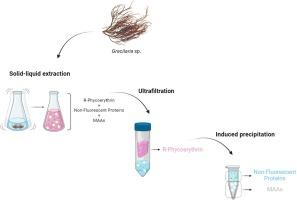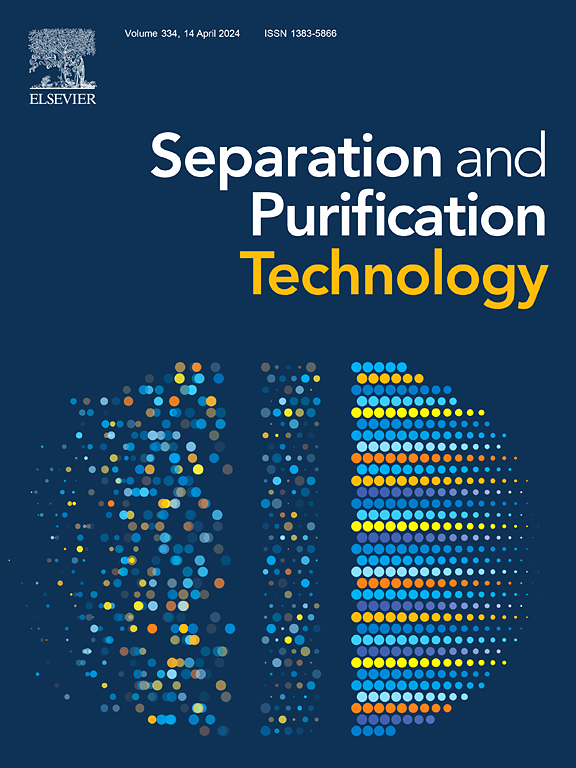Efficient extraction and purification of mycosporines-like amino acids (MAAs) following a multiproduct biorefinery approach
IF 9
1区 工程技术
Q1 ENGINEERING, CHEMICAL
引用次数: 0
Abstract
A marine bio-based economy has emerged as a sustainable and renewable solution to address the resource depletion of fossil fuels and ensure a responsible and sustainable utilization of natural resources by following a multi-product biorefinery approach. Macroalgae are a valuable source of several high-demand compounds including mycosporine-like amino acids (MAAs), which can absorb UV radiation and protect the skin from external damage. In this work, a sustainable and multi-product biorefinery was designed from Gracilaria sp. by applying a solid–liquid extraction followed by two purification steps, ultrafiltration and induced precipitation. This process enabled the recovery of three valuable compound fractions, one rich in phycobiliproteins, a second, rich in non-fluorescent proteins, and a third, rich in MAAs (main goal), specifically porphyra-334. In addition, by 2,2′-azino-bis(3-ethylbenzothiazoline-6-sulfonic acid) (ABTS) scavenging assay, MAAs-rich fraction revealed enhanced antioxidant activity. Lastly, a comprehensive conceptual design of the process was created, envisioning its implementation at an industrial scale.

多产品生物精馏方法对菌素样氨基酸(MAAs)的高效提取和纯化
以海洋生物为基础的经济已经成为一种可持续和可再生的解决方案,通过遵循多产品生物炼制方法来解决化石燃料资源枯竭问题,并确保对自然资源的负责任和可持续利用。大型藻类是几种高需求化合物的宝贵来源,其中包括真菌孢素样氨基酸(MAAs),它可以吸收紫外线辐射并保护皮肤免受外界伤害。本研究采用固液萃取、超滤和诱导沉淀两个净化步骤,设计了一种可持续的多产品生物精炼厂。该过程能够回收三种有价值的化合物组分,一种富含藻胆蛋白,第二种富含非荧光蛋白,第三种富含MAAs(主要目标),特别是Porphyra-334。此外,通过2,2 ' -氮基-双(3-乙基苯并噻唑啉-6-磺酸)(ABTS)清除实验,富maas组分显示出增强的抗氧化活性。最后,创建了该过程的综合概念设计,设想其在工业规模上的实施。
本文章由计算机程序翻译,如有差异,请以英文原文为准。
求助全文
约1分钟内获得全文
求助全文
来源期刊

Separation and Purification Technology
工程技术-工程:化工
CiteScore
14.00
自引率
12.80%
发文量
2347
审稿时长
43 days
期刊介绍:
Separation and Purification Technology is a premier journal committed to sharing innovative methods for separation and purification in chemical and environmental engineering, encompassing both homogeneous solutions and heterogeneous mixtures. Our scope includes the separation and/or purification of liquids, vapors, and gases, as well as carbon capture and separation techniques. However, it's important to note that methods solely intended for analytical purposes are not within the scope of the journal. Additionally, disciplines such as soil science, polymer science, and metallurgy fall outside the purview of Separation and Purification Technology. Join us in advancing the field of separation and purification methods for sustainable solutions in chemical and environmental engineering.
 求助内容:
求助内容: 应助结果提醒方式:
应助结果提醒方式:


